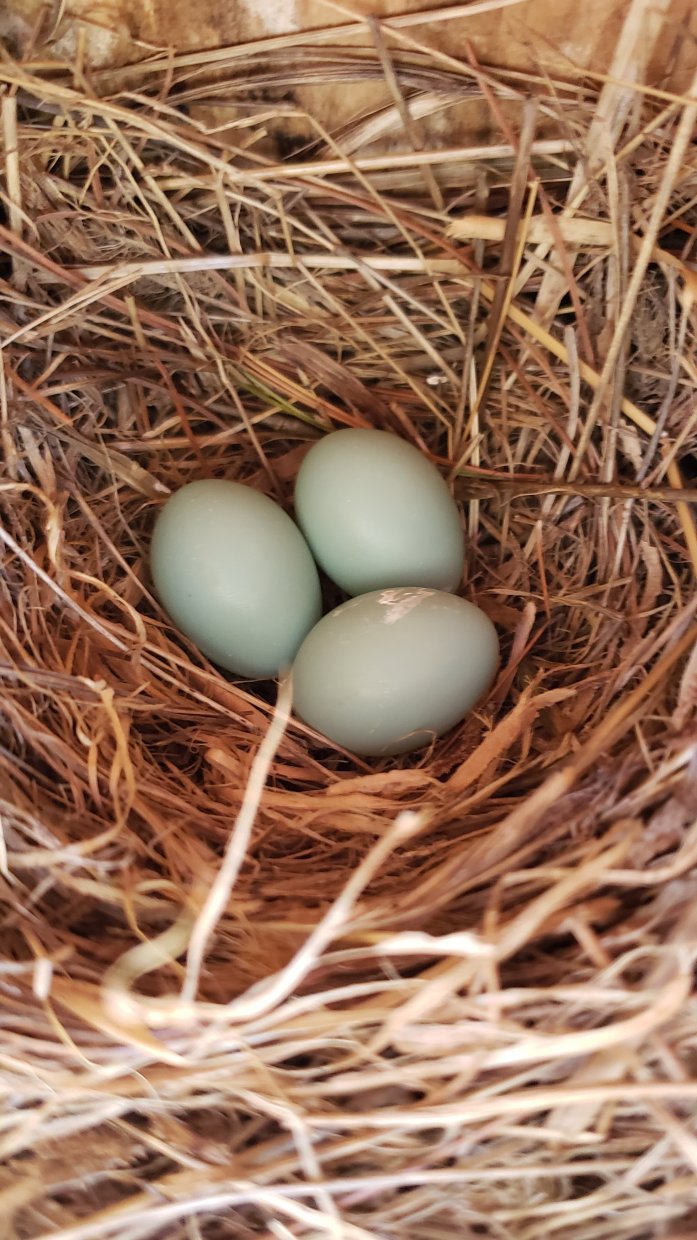Well, here we are in June. I would typically write more posts about our little group’s preparation for the new Bluebird season earlier. This year we were hit with a pandemic and some extra chilly weather in late spring. Although we started checking boxes in March this year, we had to do things a little differently.
In the past, I would don my medical grade gloves and head out to the nest boxes along our town’s bike path. I know I looked a little odd to the average passersby, but the gloves were for both the bird’s and my protection. There were many times I wished I brought a mask to protect my face while cleaning out old nests. Lately, it looks like everyone is dressed for checking nest boxes.
The spring weather was challenging in western New York. It would be sunny and 50 degrees one moment, and snowing the next. We had to be cautious when monitoring the boxes that we didn’t expose any eggs to too much inclement weather or stress out the adults. Our protocols required us to be as expeditious as possible do retrieve the data. I considered myself lucky if I got any pictures of an egg-filled nest.

Eastern Bluebird nest with eggs. © A. T. Baron

Newly hatched Eastern Bluebirds. © A. T. Baron
Nesting is in full swing. It’s nice to see a flash of blue flit from the box as I make my way along the trail. It gives me a sense of normalcy that I need right now. Besides having a few nest boxes with Bluebirds nests, we’ve had some with House Wrens and Tree Swallows.
One box contained a Black-capped Chickadee nest. The picture below has a typical Chickadee nest with a mossy base and animal fur. This one looks like the builder snagged some insulation as well. Chickadees will nest in small natural cavities in alder or birch trees. They will often excavate their own holes, but will also snag an abandoned Downy Woodpecker cavity if one is available.

Black-capped Chickadee nest in Bluebird nest box. © Angela T. Baron
We have been diligent in monitoring not just our regular 16 boxes but also 23 boxes at the Niagara County Golf Course. The additional location has been difficult due to the pandemic. State policies require us to social distance and use separate carts to travel around. We were also cursed with a plethora of House Sparrows at this location. Evicting the little buggers takes up time.
As the data and website administrator, I have been entering the data we collect from all of the nest boxes at the Cornell Lab of Ornithology NestWatch site. We won’t be able to enter the golf course information on that site at this time, but I will attempt to compile it and post the results in the future.
For now, I’d like to share some data that we have from our regular boxes. The four locations spread out across Clarence, NY gives us a nice sample of the populations in that area.

LAMBT Nest Box Data as of June 24, 2020
We’ve had at least ten nest attempts by Bluebirds so far this season with 27 eggs, 22 nestlings, and 17 fledglings (4 active nests aren’t calculated in these totals). We also have a few nests with Tree Swallows and House Wrens. Although invasive species inundate the boxes at the golf course, we haven’t had too many at our other sites.

Young fully feathered Eastern Bluebirds in nest box © A. T. Baron
It was a rocky start for our group this year, but I believe we can overcome what nature throws our way and help the Eastern Bluebirds flourish in our region.
Feel free to ask our volunteers questions if you see them trudging along, and stay safe and well while you enjoy the wilds of nature.

